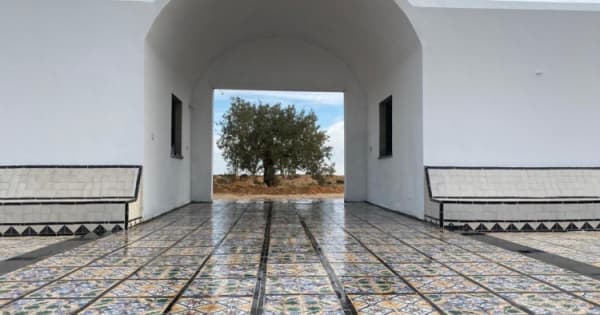In Zarzis, on Tunisia’s southern coast, Algerian artist Rachid Koraichi has created a moving memorial to the thousands of migrants who have died crossing the Mediterranean. A hybrid graveyard, garden, and art installation, Jardin d’Afrique has become the final resting place for over 300 souls whose bodies washed up on the shore of this tourist town. An historic Phoenician and Roman port and still a hub for fishing and agriculture, lately Zarzis has become known for more grisly cargo. According to the IOM, over 866 people have died crossing Mediterranean so far this year — compared with 350 a year ago.
When the renowned Paris-based artist first visited Zarzis in the spring of 2018, he says, in an interview in French from Tunis, “There was a mountain of corpses, piled in city garbage dumps.”
First alerted by his daughter Aicha, who saw images of the bodies on social media, he was “terrified” by what he saw. “It was beyond belief,” he relates.
Bodies washed up on Zarzis’ beaches are not only bloated, he notes, but “they come in pieces.”
After witnessing such horror, Koraichi resolved to honor drowned migrants by literally picking up the pieces of their lives, giving them proper burials, and notifying their relatives. He remembers seeing a newscast at the time of his first visit about a young Norwegian boy who drowned in the sea, one that drew global media attention. “There are dozens of babies dying daily in Africa, but no one talks about it,” he observes. “They have found 25,000 corpses in the Mediterranean since 2010.”
July 13, 2021




